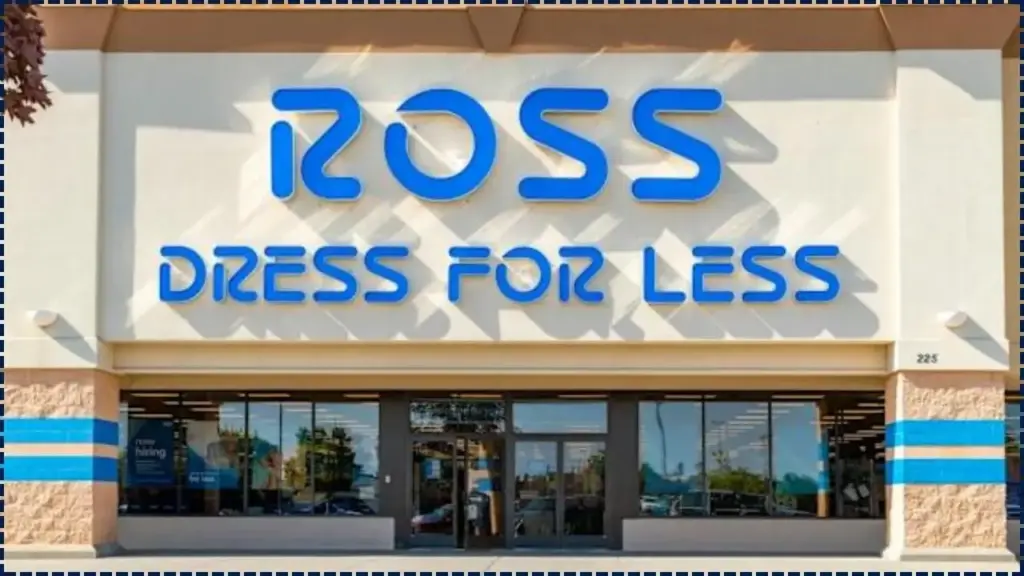Ross Stores Inc., parent of Ross Dress for Less and dd’s DISCOUNTS, announced the opening of 40 new stores across 17 U.S. states in October 2025, marking one of the most ambitious retail growth efforts in the off-price sector this year.

The rollout includes 36 Ross Dress for Less and 4 dd’s DISCOUNTS locations, completing the company’s fiscal 2025 plan for 90 openings nationwide. Executives said the expansion reflects continued confidence in the off-price model despite widespread consolidation elsewhere in the retail industry.
“Consumers continue to look for value, and we are well-positioned to deliver it,” said Greg Balser, Group Executive Vice President for Store Operations at Ross, in a statement released October 10.
Table of Contents
Ross Expands Its Footprint With Dozens of New Stores
| Key Fact | Detail/Statistic |
|---|---|
| Stores opened in Oct 2025 | 36 Ross + 4 dd’s DISCOUNTS |
| Total new stores in 2025 | 90 nationwide |
| Long-term target | 2,900 Ross + 700 dd’s DISCOUNTS |
| Comparable store sales growth FY2025 | +2 percent |
Expansion Amid Retail Contraction
Ross’s expansion stands in sharp contrast to competitors scaling back. In 2025, Macy’s, Walgreens, and The Gap announced more than 500 combined store closures, citing declining mall traffic and higher operating costs.
Ross, by contrast, is adding stores aggressively, emphasizing convenience-oriented suburban shopping centers and redeveloped retail space left vacant by weaker chains.
“Value is the key word in U.S. retail right now,” said Dr. Anya Sharma, retail economist at the Wharton School, University of Pennsylvania. “Off-price retailers are benefiting from consumers trading down without sacrificing quality.”
The off-price retail sector—led by Ross, TJX Companies (owner of T.J. Maxx and Marshalls), and Burlington Stores—has gained market share throughout the inflationary period of 2023-2025. According to National Retail Federation (NRF) data, the segment’s revenue grew nearly 7 percent in 2024, double the overall retail average.
Regional Focus: Midwest and Northeast
Ross is deepening its geographic reach beyond its traditional strongholds in the South and West. Newly opened stores in Michigan, New Jersey, and New York signal steady progress on its goal to penetrate the Midwest and Northeast.
Meanwhile, dd’s DISCOUNTS, its lower-price sister brand, is growing fastest in California and Texas, leveraging established logistics networks and high population density.
“We are deliberately broadening our regional mix to reach more customers,” the company said in its October release.
Competitive Landscape
Ross’s disciplined approach contrasts with peers taking a slower path. TJX Companies operates about 4,900 stores, expanding modestly each year, while Burlington Stores maintains around 1,000 locations. Ross’s combined total of 2,463 stores gives it strong leverage with landlords and suppliers.
“Ross’s lean cost structure and minimal advertising allow it to sustain price advantages,” noted Karen Tomaszewski, senior retail analyst at Morningstar Research. “The company’s expansion strategy is cautious but effective, targeting sites that meet strict return-on-investment criteria.”
A Morgan Stanley Research report in July 2025 estimated off-price retailers now represent 15 percent of U.S. apparel sales, up from 11 percent in 2019—a sign of structural change in consumer preferences.
Economics Behind the Growth
Ross’s store openings align with a U.S. economy still wrestling with moderate inflation and a shift toward value-driven shopping. The Bureau of Labor Statistics reported in September 2025 that core inflation slowed to 3.1 percent year-over-year, but grocery and apparel prices remain elevated.
This environment favors retailers offering discounted branded merchandise. Shoppers are increasingly visiting off-price chains to offset higher costs elsewhere.
According to Pew Research Center data, 63 percent of Americans now “actively seek discounts” when buying clothing or household goods—up nine points since 2020.
“Consumers are more strategic and less impulsive,” said Ellen Foster, professor of supply-chain management at Ohio State University. “Ross’s quick inventory turnover lets it meet demand shifts without the markdown risks seen in traditional retail.”
Real Estate and Operational Advantages
Ross benefits from favorable real-estate dynamics. Many new stores occupy second-generation retail spaces vacated by struggling chains, keeping construction costs low.
“Their model works perfectly in a dislocated property market,” said Michael Harris, a senior consultant at Cushman & Wakefield. “Ross can retrofit existing spaces quickly and cost-effectively.”
Leasing older sites also enables faster market entry. The company typically invests about $2 million per new location, below the industry average for comparable square footage.
Ross has also modernized its distribution centers in California, Texas, and Georgia, reducing freight times and improving inventory flow. Logistics improvements helped mitigate the impact of fuel and wage inflation on operating margins, according to its Q2 financial report.
Market Performance and Investor Reaction
Ross Stores’ (NASDAQ: ROST) stock has climbed roughly 18 percent year-to-date, outperforming the S&P Retail Index’s 9 percent gain. Analysts cite consistent profitability and prudent expansion as major strengths.
The company reported $12.5 billion in net sales for the first half of fiscal 2025, a 6 percent increase from a year earlier. Operating income held steady at 10 percent of sales despite higher wage expenses.
“Ross’s financial discipline is exceptional,” wrote Morgan Stanley equity strategist Hannah Lee in an October note. “Its asset-light approach provides resilience against cyclical downturns.”
Looking Ahead
Ross projects a long-term potential of 2,900 Ross Dress for Less and 700 dd’s DISCOUNTS stores. It currently operates 2,108 Ross and 355 dd’s locations across 43 states, the District of Columbia, and Guam.
Unlike many retailers, Ross remains focused solely on brick-and-mortar. It does not sell products online, emphasizing the “treasure-hunt” shopping experience that drives repeat visits.
Industry observers note that while market saturation may eventually limit expansion, Ross’s balance sheet and brand positioning provide ample room for sustainable growth.
“Ross is a steady compounder,” said Sarah Kim, retail strategist at UBS Global Research. “Its conservative expansion plan is exactly what investors want to see in this environment.”
Broader Retail Implications
Ross’s continued growth underscores the resilience of off-price retail in a consumer economy still adjusting to post-pandemic inflation and uneven wage growth.
The company’s strategy—offering national brands at steep discounts, managing lean inventories, and leveraging flexible leasing—illustrates how traditional retailers can still thrive without relying on e-commerce.
“The lesson here is discipline,” said Dr. Sharma of Wharton. “Ross proves that a clear value proposition, efficient operations, and cautious expansion can outperform in any market cycle.”



















